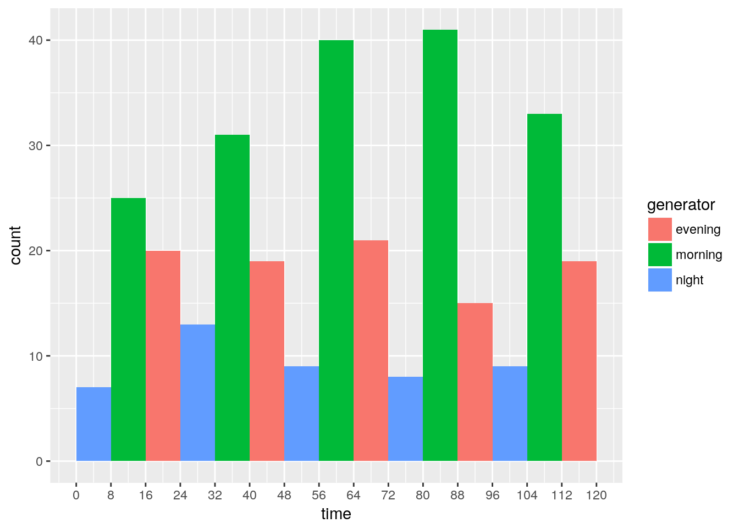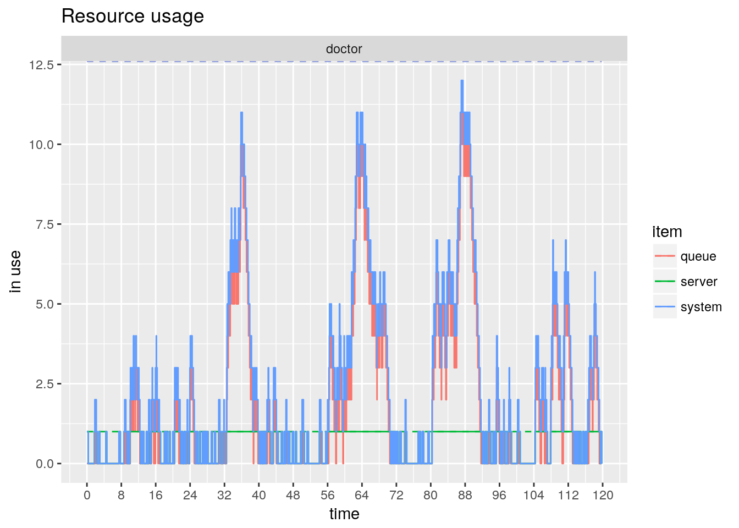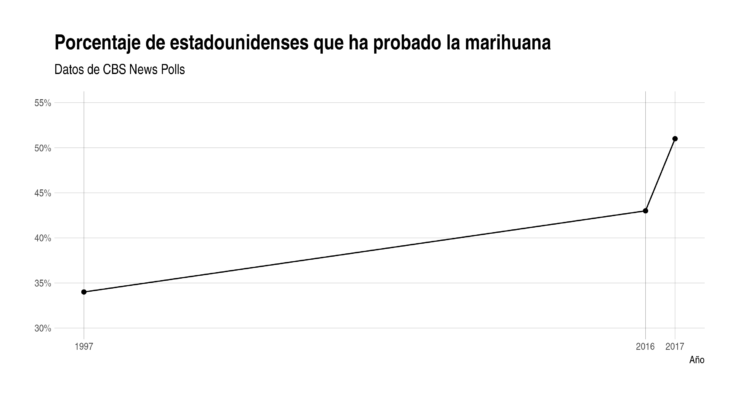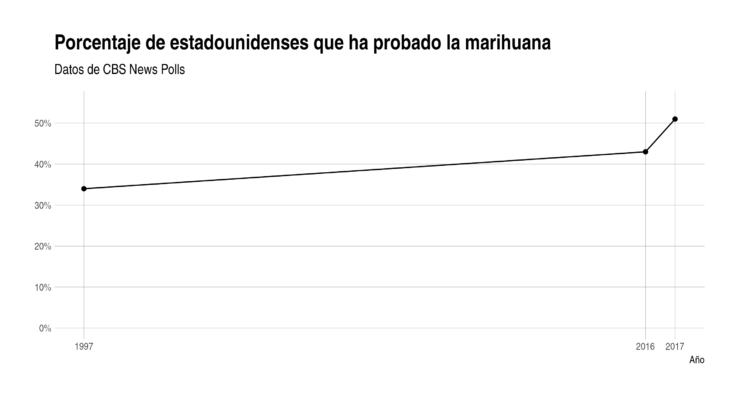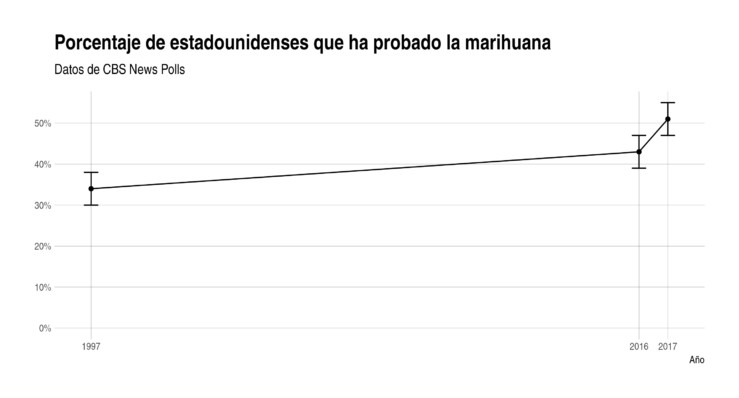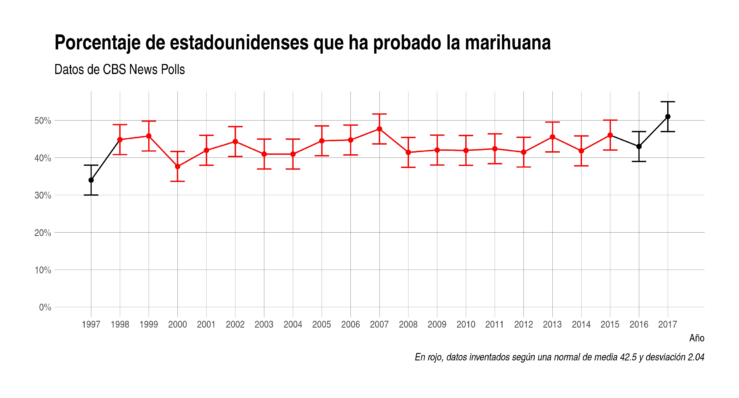In physics, engineering and other disciplines, a single number, a bare quantity, is useless, meaningless. When you measure something, your results will be within the precision of your equipment, and then you need to propagate those errors up to whatever final indirect measure you are interested in. Finally, you need to express it properly. For instance, the elementary charge:
library(errors)
e <- set_errors(1.6021766208e-19, 0.0000000098e-19)
print(e, digits=2, notation="plus-minus")## (1.6021766208 +/- 0.0000000098)e-19print(e, digits=2, notation="parenthesis")## 1.6021766208(98)e-19Propagation of uncertainty (or propagation of error) is easy, but too labourious. Lately, for various reasons, I have been growing sick of this task, so I decided to write this small package. In a nutshell, the errors package, which is already on CRAN, provides support for painless automatic error propagation in numerical operations and pretty printing.
With errors, you can add errors to your numeric vectors:
x <- 1:10
errors(x) <- 0.1
x## errors: 0.1 0.1 0.1 0.1 0.1 ...
## [1] 1 2 3 4 5 6 7 8 9 10errors(x)## [1] 0.1 0.1 0.1 0.1 0.1 0.1 0.1 0.1 0.1 0.1errors(x) <- seq(0.1, 1, 0.1)
errors(x)## [1] 0.1 0.2 0.3 0.4 0.5 0.6 0.7 0.8 0.9 1.0The set_errors() method is a pipe-friendly version of the above:
(x <- set_errors(1:10, seq(0.1, 1, 0.1)))## errors: 0.1 0.2 0.3 0.4 0.5 ...
## [1] 1 2 3 4 5 6 7 8 9 10Then, you simply work with your quantities without having to worry about errors anymore:
df <- as.data.frame(x)
(df$`3x` <- 3*x)## errors: 0.3 0.6 0.9 1.2 1.5 ...
## [1] 3 6 9 12 15 18 21 24 27 30(df$`x^2` <- x^2)## errors: 0.2 0.8 1.8 3.2 5 ...
## [1] 1 4 9 16 25 36 49 64 81 100(df$`sin(x)` <- sin(x))## errors: 0.054030230586814 0.0832293673094285 0.296997748980134 0.261457448345445 0.141831092731613 ...
## [1] 0.8414710 0.9092974 0.1411200 -0.7568025 -0.9589243 -0.2794155
## [7] 0.6569866 0.9893582 0.4121185 -0.5440211(df$`cumsum(x)` <- cumsum(x))## errors: 0.1 0.223606797749979 0.374165738677394 0.547722557505166 0.741619848709566 ...
## [1] 1 3 6 10 15 21 28 36 45 55Finally, you probably need to report your data in a consistent way. No problem: just print your table.
df## x 3x x^2 sin(x) cumsum(x)
## 1 1.0(1) 3.0(3) 1.0(2) 0.84(5) 1.0(1)
## 2 2.0(2) 6.0(6) 4.0(8) 0.91(8) 3.0(2)
## 3 3.0(3) 9.0(9) 9(2) 0.1(3) 6.0(4)
## 4 4.0(4) 12(1) 16(3) -0.8(3) 10.0(5)
## 5 5.0(5) 15(2) 25(5) -1.0(1) 15.0(7)
## 6 6.0(6) 18(2) 36(7) -0.3(6) 21.0(10)
## 7 7.0(7) 21(2) 49(10) 0.7(5) 28(1)
## 8 8.0(8) 24(2) 60(10) 1.0(1) 36(1)
## 9 9.0(9) 27(3) 80(20) 0.4(8) 45(2)
## 10 10(1) 30(3) 100(20) -0.5(8) 55(2)By default, errors uses parenthesis notation (which is more compact) and a single significant digit for errors. If you prefer the plus-minus notation or you need more significant digits, just pass the notation and digits arguments to the print() method, as in the first example, or set them as global options with options(errors.notation="plus-minus", errors.digits=2).
The inner workings of this package have been inspired by Edzer Pebesma and his excellent units package. As a next step, I envision numeric vectors with errors and units for R. Thus, I publicly invite Edzer to collaborate with me in making our packages work together.
